MXA RACE TEST: THE REAL TEST OF THE 2019 KAWASAKI KX250
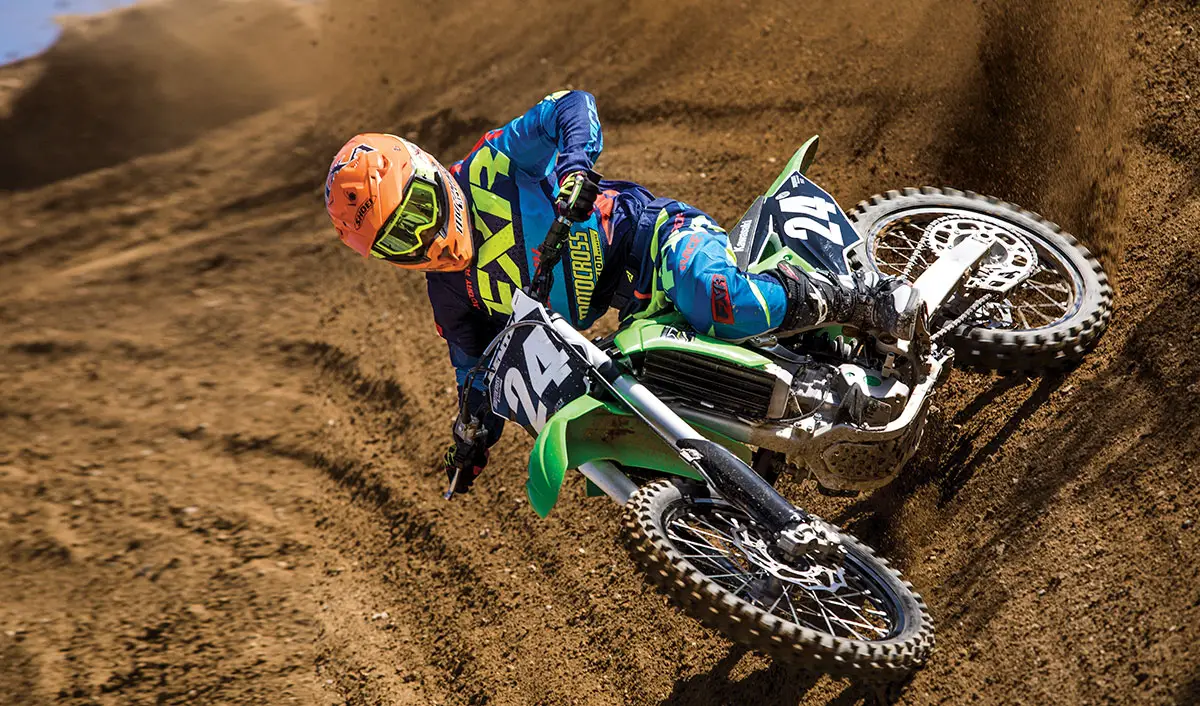
Q: FIRST AND FOREMOST, IS THE 2019 KAWASAKI KX250 BETTER THAN THE 2018 KX250?
A: The 2019 Kawasaki KX250 is at the tail end of the traditional four-year Japanese production cycle. To realize a return on investment, the “Big Four” stick with a given design for four years before investing in any major updates (unless confronted by a major design flaw). Thus, we suspect that in 2020 Kawasaki will do a total makeover of the KX250. This also fits into the production cycle scenario of updating the Kawasaki KX450 and then one year later applying the 450 changes to the 250 KX250. In order to balance the books, all of the R&D money in 2019 went to the all-new KX450, while zero dollars were spent on the 2019 KX250. So, to answer the question, the 2019 KX250 is no different from the 2018 model because, save for BNG (bold new graphics) and changing the bottom piece of the two-piece radiator shroud from black to green, it is the same bike.
Q: HOW MUCH DOES THE 2019 KX250 COST?
A: The 2019 Kawasaki KX250 is priced at $7749. That is $1350 less than the Husqvarna FC250, $1250 less than the KTM 250SX, $450 less than the YZ250F and $250 less than the Honda CRF250. 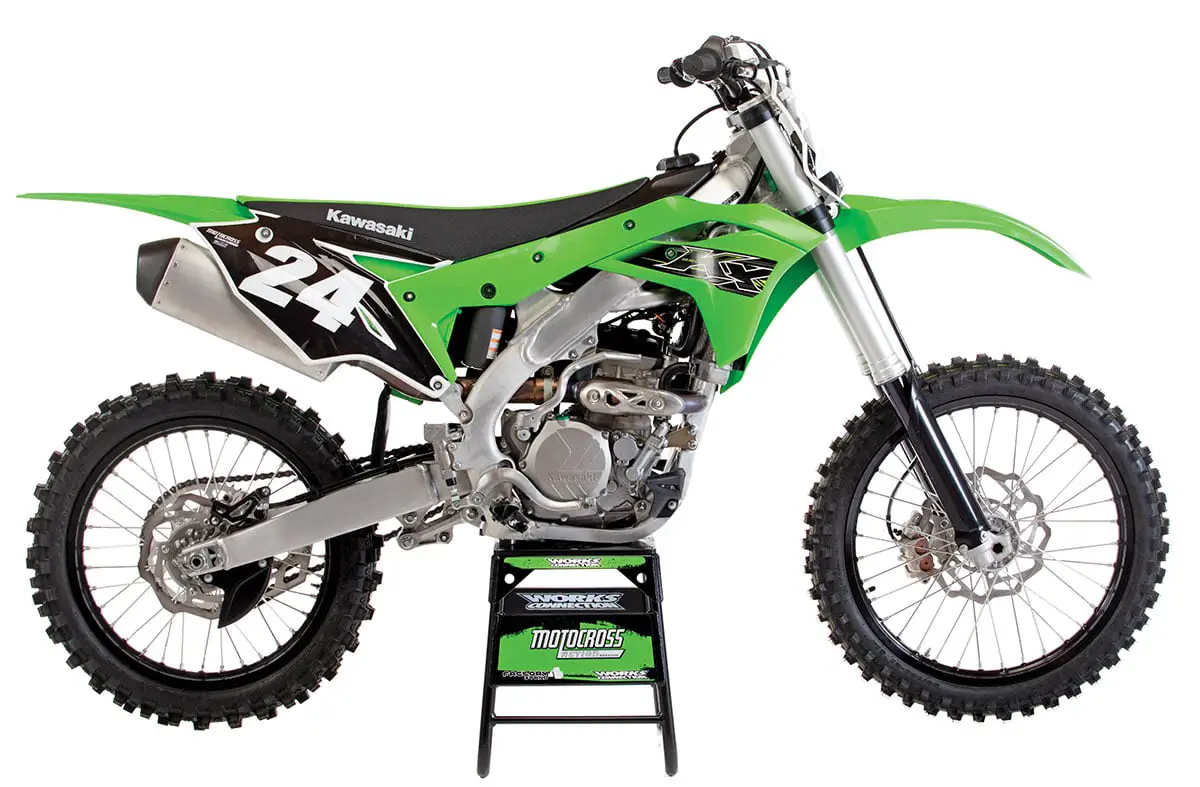 Kawasaki spent all of their 2019 R&D money on the KX450. The KX250 will have to wait until 2020.
Kawasaki spent all of their 2019 R&D money on the KX450. The KX250 will have to wait until 2020.
Q: WHAT DO WE THINK OF THE KX250 POWERPLANT?
A: We miss the old 2016 KX250F engine. Kawasaki got behind the eight ball when they introduced the 2017 KX250F. The 2017 engine actually made more horsepower than the 2016 engine, but the excitement of the 2016’s hard midrange hit had disappeared. Bottom line, it was slower on the track. For 2018 Kawasaki actually put some effort into refining the watered-down powerplant, because they defined the 2017 power delivery as a major design flaw. The fix wasn’t a bases-loaded home run, but the 3-horsepower gain in the midrange was a solo home run. On the dyno, it was a much bigger improvement than it was on the track. The power delivery was strange. Loyal KX250 racers wanted a replica powerband of the 2016 engine. Was that too much to ask? They didn’t get it. The power was slow to get going, had a bump of power in the midrange (which the dyno liked) and tracked slowly to the top. Test riders liked that the power didn’t fall off on top, but the general reaction was a yawn.

When comparing the 2019 KX250 engine to the competition, it doesn’t hold a candle to podium runners like the KTM 250SXF, Husqvarna FC250 and Yamaha YZ250F. The future 2020 KX250 engine will need some massaging to close the gap on the 4-horsepower-stronger KTM and Husky.
The biggest downside with the 2019 Kawasaki KX250’s powerband is the delivery on the bottom end. It forced test riders to downshift, often as many as two gears going into corners instead of one like the other bikes. This was exhausting. Luckily, we found a cure. Unfortunately, it entails opening up your wallet.
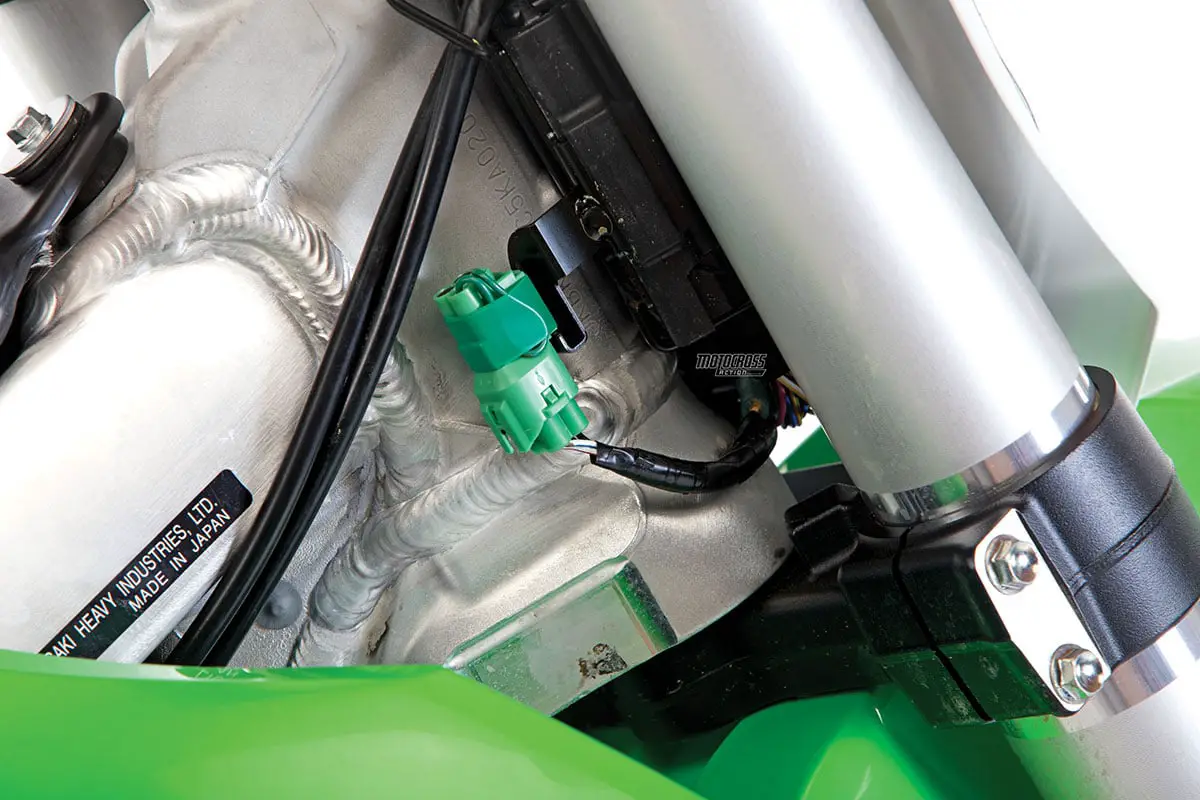
Q: WHAT CAN YOU DO TO GET THE MOST OUT OF THE KX250?
A: The KX250 comes with three different couplers that generate three distinctly different maps. Unfortunately, this story doesn’t end like Goldilocks and the three bears (with one coupler being just right). The black one is too slow; the green doesn’t have enough bottom; and the white one lacks top. So what is there to do? You have two options: (1) Whip out your plastic money and buy the KX Fi calibration tool for $699.95. (2) Visit the dealer you bought your Kawi from and see if he has the calibration hardware to put the correct map in the 2019 KX250. If you’re a loyal customer, he should not charge you for the service.
If you decide to purchase the Kawasaki mapping tool, it takes practice to get the hang of. It has 36 boxes of adjustment for both fuel mixture and ignition timing. It is easier to spin off a bad combination than a good one. Don’t worry; we’ve got the map you need, and you can see it in this test.
Q: SHOULD THE STOCK GEAR RATIO BE CHANGED?
A: Stock gearing is best for any rider transitioning up from a mini bike and for less-skilled riders. Everyone else should add a tooth on the rear (from a 50- to a 51-tooth). It will turbo-boost the powerband. Every tester liked the extra grunt out of corners. The only downside is that you are kept busy shifting because the engine revs through the gears faster.
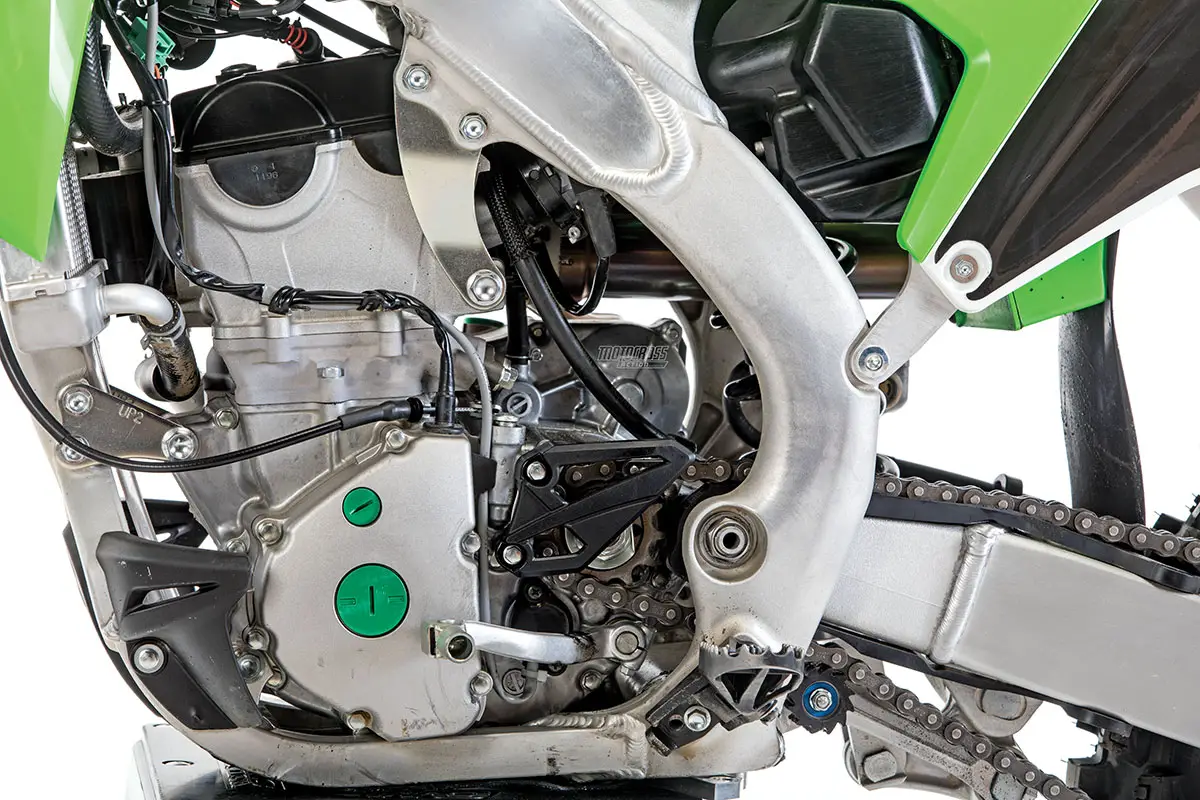
Q: WHAT IS THE KX250’S ACHILLES HEAL?
A: The clutch. We didn’t have as many issues with the 2017 KX250 clutch, but on the 2018–2019 models the added midrange oomph was too much for the borderline clutch. Riders who don’t normally burn up clutches burned through the KX250 clutch. The cheap fix it to buy a set of stiffer Pro Circuit clutch springs ($69.95), but the set-it-and-forget-it solution is to buy a full Hinson or Rekluse clutch. The downside? It will set you back a grand to be able to feather away.

Q: HOW DOES THE 2019 KAWASAKI KX250 HANDLE?
A: This is a chassis with a lot of potential—you just have to unlock it. When you drive into a corner and sit down, you sink into the seat. This lowers your center of gravity more than on other bikes. It takes a bit of getting used to, but the hunkered down feeling locks you into ruts. MXA test riders felt that the KX250 was a great cornering bike, although finding that sweetness wasn’t helped by the cranky stock forks.
Every test rider loved how thin the 2019 KX250 felt. It has a nimble and light feel. You can maneuver the KX250 around, over and through traffic with ease. The KX250 is the lightest Japanese-made 250F at 221 pounds. It is only 3 pounds heavier than the 218-pound KTM 250SXF. It is helped in its quest to be the lightest Japanese-made 250 by the fact that both Yamaha and Honda electric started their 250s for 2019. The 2019 Kawasaki KX250 and Suzuki RM-Z250 are kickstart-only machines.
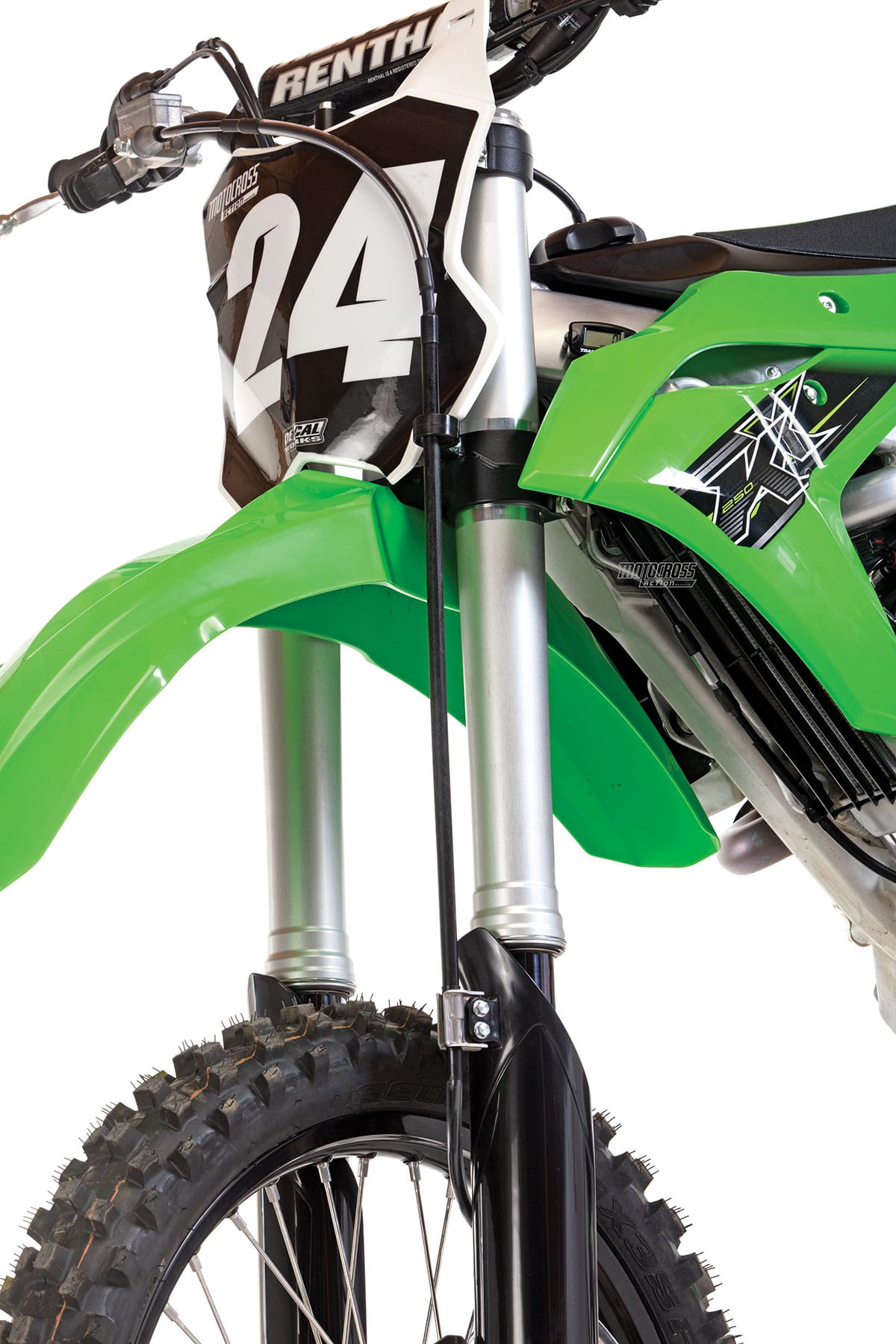
Q: HOW DOES THE SHOWA SUSPENSION WORK ON THE TRACK?
A: For 2018, Kawasaki changed the spring rate, added preload and changed the valving on the Showa single-coil-spring SFF forks. These changes made them worse, not better. The 2017 Showa forks rode a bit low in the stroke, but every test rider liked them. For 2018, the Showa forks rode higher in the stroke but were too stiff and had a harsh spot that testers wouldn’t accept. We tried to go stiffer and softer, but there was no way around it. Coming into corners, the forks rode in this harsh spot and bounced around. That made it difficult for them to stay on the line we wanted.
We found that taking preload out and softening up the forks significantly helped manage the harsh mid-stroke. This allowed more weight on the front end, encouraging the KX250 to settle into corners better. Riders above 185 pounds will be on the cusp of bottoming. Last year, we sent our KX250F suspension components to Pro Circuit, who dialed them in perfectly. We will do the same for 2019.
We had no issues with the Showa shock. It was great if you fit the stock spring rate.
Q: WHAT DID WE HATE?
A: The hate list.
(1) Clutch. Everyone loves the silky-smooth feel of the KX250 clutch, but it doesn’t last. Invest in stiffer springs or an aftermarket clutch package.
(2) Chain guide. Our KX250 chain guide wore out in 15 hours. Do not order another OEM chain guide; it will just wear out again. Call T.M. Designworks and order its bulletproof chain guide.
(3) Maps. We don’t like any of the three maps that come with the bike. Plus, many of the KX250Fs had a bad decel pop. We made our own map.
(4) Airbox. The right side air box vent is fake. Why? To help pass the AMA/FIM sound test. The Pro Circuit team cuts out the right side air box vent (and they pass the sound test every time).
(5) Launch control. Launch control is a gimmick on a 250F engine. A 250 isn’t powerful enough to need it.
(6) Forks. The Showa SFF forks are stiff and harsh. None of the MXA test riders like them. We sent them to Pro Circuit.
(7) Starting. The KX250 and RM-Z250 are the only 250Fs that don’t have electric starting. We hope this changes in 2020.
(8) Engine. This engine saw improvement from 2017 to 2018, but not from 2018 to 2019. While other manufacturers have upped the ante, Kawasaki remained stagnant for 2019.
Q: WHAT DID WE LIKE?
A: The like list.
(1) Ergonomics. The narrow chassis makes you feel at home on the bike. If you don’t, the pegs and bars are adjustable.
(2) Shock. This Showa shock does everything well.
(3) Tires. The KX250 comes standard with our favorite Dunlop MX3S tires.
(4) Weight. The KX250 is light. It is the third-lightest bike behind the KTM 250SXF and FC250.
(5) Price. This is the least expensive bike in the class.
Q: WHAT DO WE REALLY THINK?
A: The KX250 is a good bike, but you have to look past the archaic Showa SFF forks. These forks are unique in that they have all of the damping in one fork leg and a coil spring in the other leg; if you described them as a “poor man’s air fork,” you wouldn’t be far off. The KX250 engine tickles the 40-horsepower mark, but it needs mapping help to feel spot-on (and even at that, it can’t touch the 44-horse Austrian 250s). The best thing about the 2019 KX250 is its slim chassis and great ergos. Would we buy one? No, we’d wait for the 2020 KX250 model to be released. If they do to it what they did to the KX450, it could be awesome.


MXA’S 2019 KAWASAKI KX250 SETUP SPECS
This is how we set up our 2019 Kawasaki KX250 for racing. We offer it as a guide to help you find your own sweet spot.
SHOWA SFF TYPE 2 FORK SETTINGS
We like that we can adjust the preload as well as the rebound and compression on the Showa SFF Type 2 forks. This allows us to find the ride height we want rather than moving the forks up or down into the clamps. To get the bike balanced, play with the preload adjuster. Just one click makes a big difference. For hardcore racing, we recommend this fork setup for the 2019 Kawasaki KX250 (stock specs are in parentheses):
Spring rate: 9.4 N/m
Preload: 6 clicks in (11 clicks in)
Compression: 18 clicks out (8 clicks out)
Rebound: 14 clicks out (16 clicks out)
Fork-leg height: Standard
Notes: There is a mid-stroke harsh spot that you need to manage. We softened up the preload and compression to try and work through it, but never found a happy place. Pro Circuit solved the problem we couldn’t.
SHOWA SHOCK SETTINGS
After we set the sag to the recommended 105mm, the stock settings were already in the ballpark. We tried a lot of settings but always ended up close to the stock settings. For the target audience of 250cc four-stroke riders, the stock shock spring might be too stiff for the typical 130-pound 250 rider. In that case, drop the stock 5.2 N/m shock spring for a 4.9 N/m spring. Riders over 185 pounds will need to stiffen up the compression. For hardcore racing, we recommend this shock setup for the 2019 Kawasaki KX250 (stock specs are in parentheses):
Spring rate: 4.9 N/m (130 pounds to 150 pounds), 52 N/m (150 and up)
Race sag: 105mm
Hi-compression: 2-1/2 turns out (2-1/4 turns out)
Lo-compression: 10 clicks out (11 clicks out)
Rebound: 9 clicks out (12 clicks out)
WATCH THE 2019 KAWASAKI KX250 IN ACTION



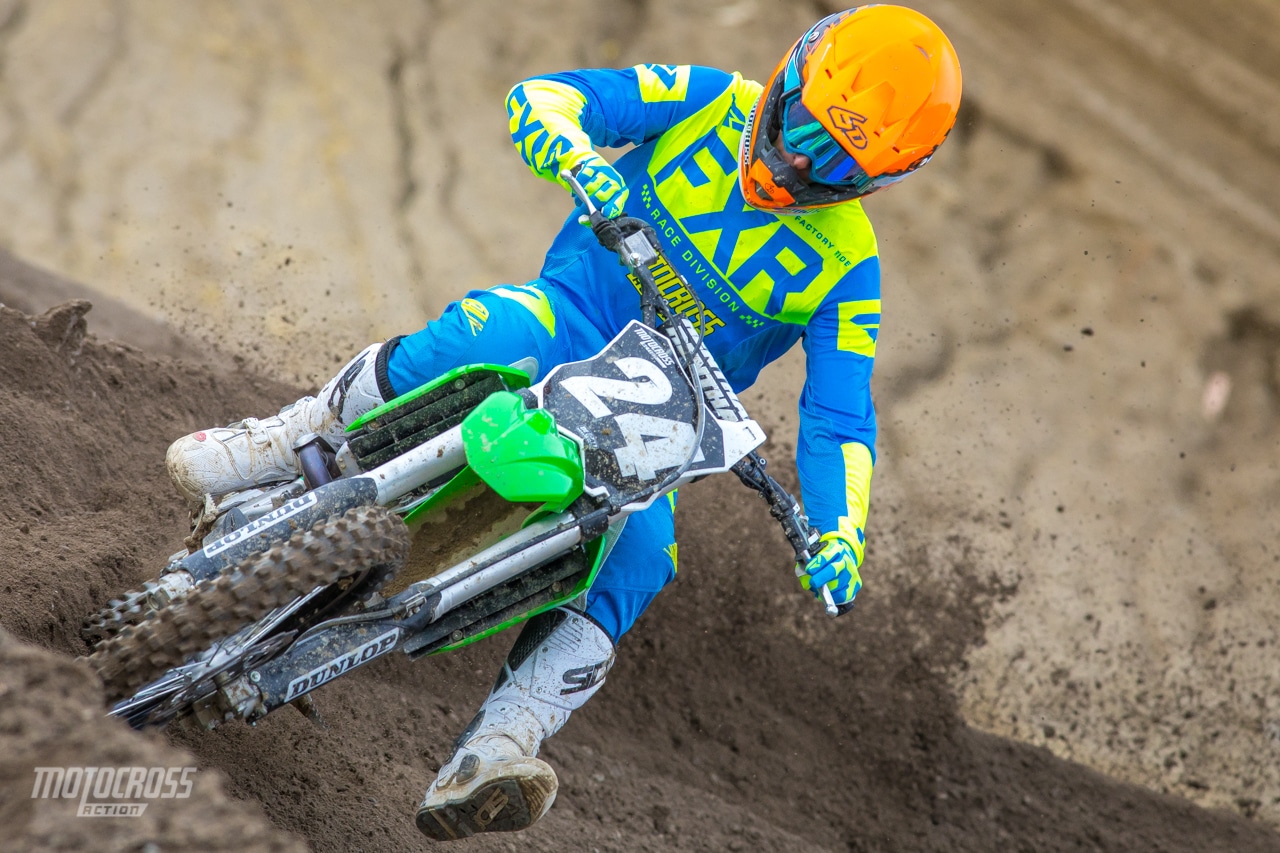
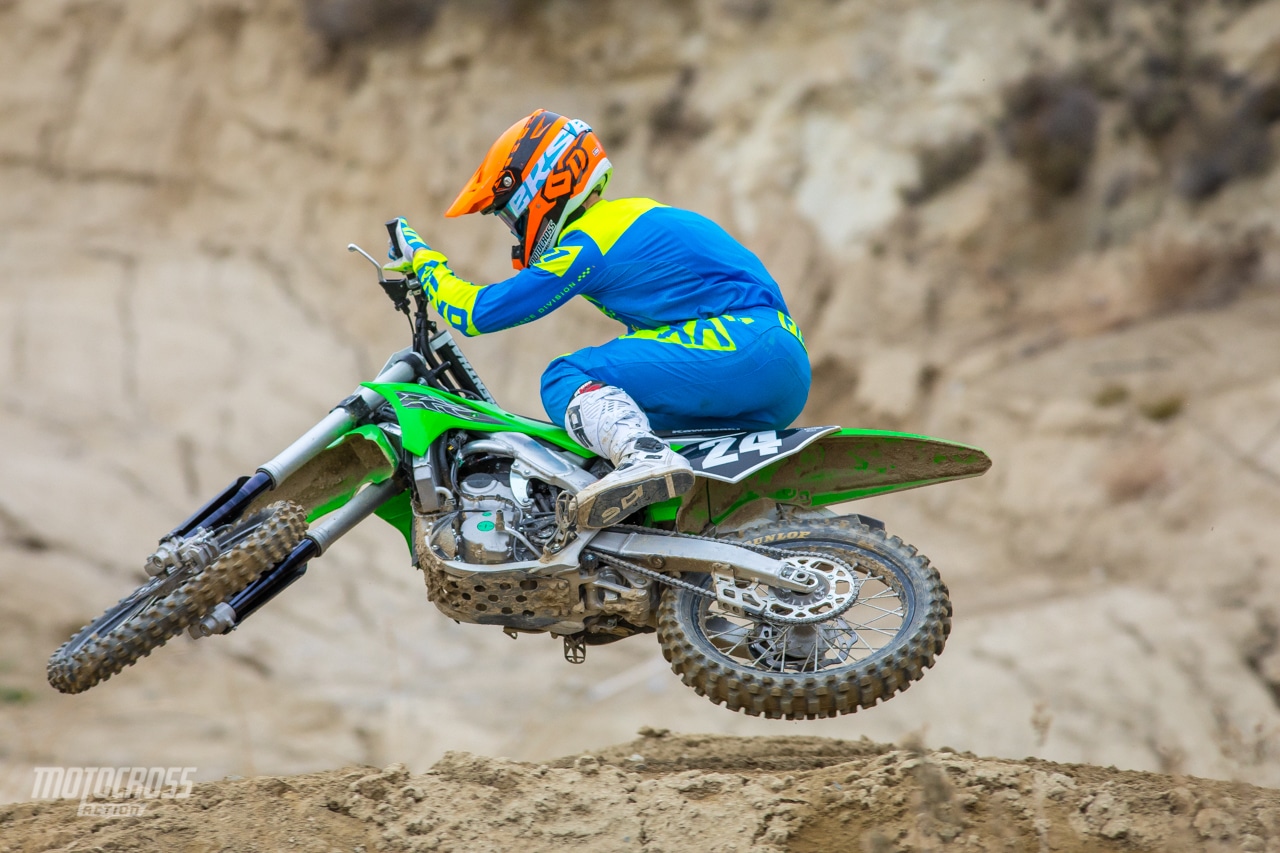



Comments are closed.